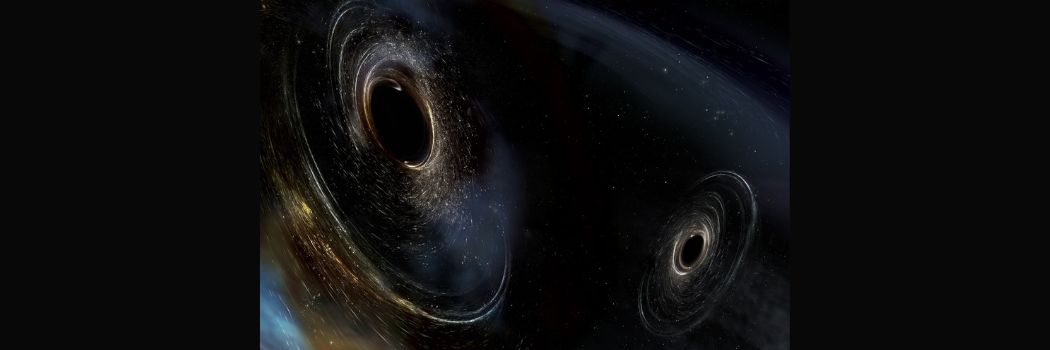
We're part of an international team of cosmologists who've discovered that observations of gravitational waves might reveal the true nature of dark matter.
Using computer simulations, the team, including Durham's Institute for Computational Cosmology/Department of Physics, studied the production of gravitational waves in simulated universes.
Mysterious substance
Each universe featured different kinds of dark matter – a mysterious substance that binds together galaxies, creating the environment for stars, planets and life to exist.
The team studied the production of gravitational wave signals – caused by black hole mergers - in the simulated universes.
They found that counting the number of black-hole mergers could tell us if dark matter interacts with other particles. Despite making up a large amount of the Universe's mass, scientists don't know what dark matter is.
There are questions about whether dark matter particles can collide or interact with other particles such as atoms or neutrinos, or whether they pass straight through them unaffected.
This can be tested by looking at how galaxies form in dense clouds of dark matter called haloes - if dark matter collides with neutrinos its structure becomes dispersed and fewer galaxies are formed.
The problem with this is that such galaxies are very small and so distant from us it's hard to see if they are there or not, even with the best telescopes available.
Black hole mergers
The new simulations show that in models where dark matter does collide with other particles, there are significantly fewer black hole mergers in the distant universe (or, equivalently, when it was very young).
While this is too small to be seen by current gravitational wave experiments, it will be a prime target for the next generation of observatories currently being planned.
The authors hope their methods will see gravitational wave data being used to explore the large-scale structure of the Universe - and shine new light on the nature of dark matter.






